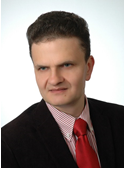Abstract
Currently, the energy sector is facing a great challenge of transformation towards climate neutrality. It is possible mainly through distributed smart grid based on renewable energy sources, which are inherently inflexible. Therefore, it is necessary to improve the energy sector by develop of storage technologies. Here we would like to present thermo-mechanical energy storage in m-CAES (Compressed Air Energy Storage/System) technology. In the existing state-of-art, both scientists and engineering groups indicate barriers and limitations in m-CAES development in poorly recognised nature of air expansion dynamics. Existing of storing-expansion pressure gap, problem with heat transfer and storage and unstable power generation through turbines results in low roundtrip efficiency 30-50% [1]. We discover that the controllability of expansion process dynamics is improved by exploiting the inertia of the elements in multiple piston expander with air injection and pulse heating by Thermal Energy Storage (TES) [2]. In our research we applicate the theory of impinging pressure of injected air into piston wall by prof. John Hutchison [3] to novel strategy of Mechanical Energy Storage (MES) discharge. In addition, the achievements of prof. Alto Steinfeld concerning thermal energy storage in granular/phase change materials are used to study the place of heat supply to the system [4]. We employ the above mention two approaches to increase roundtrip efficiency of m-CAES to 70-75% or more.
[1] Budt, M., Wolf, D., Span, R., & Yan, J. (2016). A review on compressed air energy storage: Basic principles, past milestones and recent developments. Applied Energy, 170, 250–268.
[2] Leszczynski, J. S., & Grybos, D. (2020). Sensitivity analysis of Double Transmission Double Expansion (DTDE) systems for assessment of the environmental impact of recovering energy waste in exhaust air from compressed air systems. Applied Energy, 278, 115696.
[3] Hutchinson, J. W. (2009). Energy and Momentum Transfer in Air Shocks. Journal of Applied Mechanics, 76(5), 051307.
[4] Becattini, V., Motmans, T., Zappone, A., Madonna, C., Haselbacher, A., & Steinfeld, A. (2017). Experimental investigation of the thermal and mechanical stability of rocks for high-temperature thermal-energy storage. Applied Energy, 203, 373–389.
BIOGRAPHICAL NOTE
 Professor J. Leszczynski, eight year ago, has moved from Czestochowa University of Technology to AGH University of Science and Technology, Poland. At present he is a Full Professor at AGH University of Science and Technology, Cracow, Poland, Faculty of Energy and Fuels. Over thirty years he has worked in project grants, industrial applications and academic programs that concern the following scientific activities: energy efficiency, modelling of complex systems, application of fractional calculus in energy and mechanical sciences. He has been Principal Investigator and Research Coordinator on applied research and development projects at around 35 M€ including three successful EU project grants. His scientific activity relevant to the proposal includes: energy efficiency systems, compressed air energy storage, energy harvesting units, modelling techniques of complex systems, design and construction of magnetic circuits, fractional calculus and its application to energy and mechanical sciences, as well as management of R&D groups and understanding of the properties of industrially applicable modelling and construction of energy systems and machines. Summarising educational background he supervised many M.Sc. theses from Energy Engineering, Computational Science and Environmental Protection and three PhD theses from Mechanical and Energy Engineering. He is a Member of many scientific organizations, like IEEE and the EU expert. He acts as Subject Editor of Applied Mathematical Modelling Journal. His implementation background within last 5-years includes self-elaboration or group-elaboration of 8 products - i.e. nanocrystalline and amorphous magnetic cores, low-losses instrument transformers, low-losses chokes, current transformers dedicated for energy metering, 1 computer code used in industry– population balance used in modelling of steady regimes in circulating fluidised bed boilers, 2 commercial algorithms – used to model energy efficiency in buildings, 4 technology transfers and 7 patents where 4 of them are implemented in some production technologies. His experience allows for combining his excellent theoretical knowledge with expected industrial needs to be used from laboratory through semi-technical to full-technical scale.
Professor J. Leszczynski, eight year ago, has moved from Czestochowa University of Technology to AGH University of Science and Technology, Poland. At present he is a Full Professor at AGH University of Science and Technology, Cracow, Poland, Faculty of Energy and Fuels. Over thirty years he has worked in project grants, industrial applications and academic programs that concern the following scientific activities: energy efficiency, modelling of complex systems, application of fractional calculus in energy and mechanical sciences. He has been Principal Investigator and Research Coordinator on applied research and development projects at around 35 M€ including three successful EU project grants. His scientific activity relevant to the proposal includes: energy efficiency systems, compressed air energy storage, energy harvesting units, modelling techniques of complex systems, design and construction of magnetic circuits, fractional calculus and its application to energy and mechanical sciences, as well as management of R&D groups and understanding of the properties of industrially applicable modelling and construction of energy systems and machines. Summarising educational background he supervised many M.Sc. theses from Energy Engineering, Computational Science and Environmental Protection and three PhD theses from Mechanical and Energy Engineering. He is a Member of many scientific organizations, like IEEE and the EU expert. He acts as Subject Editor of Applied Mathematical Modelling Journal. His implementation background within last 5-years includes self-elaboration or group-elaboration of 8 products - i.e. nanocrystalline and amorphous magnetic cores, low-losses instrument transformers, low-losses chokes, current transformers dedicated for energy metering, 1 computer code used in industry– population balance used in modelling of steady regimes in circulating fluidised bed boilers, 2 commercial algorithms – used to model energy efficiency in buildings, 4 technology transfers and 7 patents where 4 of them are implemented in some production technologies. His experience allows for combining his excellent theoretical knowledge with expected industrial needs to be used from laboratory through semi-technical to full-technical scale.
